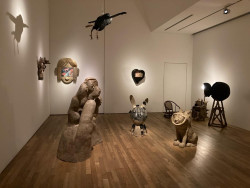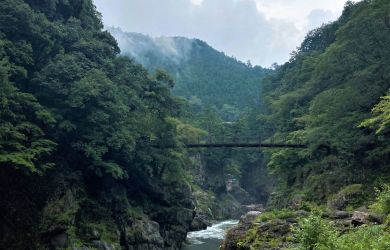
March 1, 2012
Ken Ishii
Out of the dark and into the daylight for Japan’s biggest techno DJ
By Metropolis
Originally published on metropolis.co.jp on March 2012

Metropolis caught up with veteran techno standard-bearer Ken Ishii to hear about his recent liberation from late nights and pounding beats. Ishii’s new musical vision is captured on Music for Daydreams, issued under the stage name “Metropolitan Harmonic Formulas.”
What experiences provided the backdrop for Music for Daydreams?
I’ve been doing in-house music programs for Tokyo Midtown Galleria since 2010. They’re designed for day people and mixed generations. It’s fun to do something for a different audience from my usual one of young night people. This experience inspired me to make a full album for the daytime. Plus, it’s been a couple years since I released my last original album Sunriser and I wanted to challenge myself. I did some collaborations with artists from other styles. This is why the album sounds different and why I gave this project the new name, “Metropolitan Harmonic Formulas.”
Tell us about the creation of one song.
For the last track, “After The Rainstorm,” I worked with Ryota Nozaki aka Jazztronik. He’s a great jazz/dance producer as well as an excellent pianist. I initially asked him to write piano lines, giving him a few keywords and images. He got back to me with amazingly emotional phrases. Then I added rhythms, bassline and strings to construct a whole track. It was the first track I produced after the 3/11 disaster. I was deeply shocked and didn’t feel like making music for a month or two, but this experience saved me.
You worked with many “live” musicians on the album. How is it different from working alone?
The first difference is that I communicate with other people and enjoy swapping ideas. Then I get “randomness” from what the musicians play or sing. You don’t get it so often when you work alone with machines. For instance, doing a session with Naruyoshi Kikuchi, the sax player for “Can You Feel It” and “Light in The Solitude,” was just a few hours of fun in the studio. But afterwards it took me loads of time to choose parts and tweak hundreds of bits on EQ etc. It’s a completely different technique from controlling pure electronic sounds.
Two decades since your debut, how has dance music changed?
Dance music has become for everybody. At first, it was truly underground and not many countries had proper scenes. Now it’s everywhere—the [former] Eastern Bloc, South America, Southeast Asia and the Middle East—and every kid wants to be a DJ. At the same time, we now have too much commercial stuff.
Recently there has been a big police crackdown on clubs, particularly in Kansai. What is your view of the Japanese club scene?
This isn’t the case in the Tokyo area yet, but I’m sure it would seriously damage the scene. The general turnout in clubs went down after last year’s disaster, and I hope this won’t go further.
What’s your take on the big new club Vision?
Really cool. It’s huge even though it’s right in the center of Shibuya. I didn’t know there was so much space left there! Also the club has the similar atmosphere to what underground clubs in NYC or London used to have in the late ’80s/early ’90s, which is good.
Where will Ken Ishii be in another 20 years?
Oh, that’s a hard question! I have never thought of my future, actually. Maybe doing the same things I love, music and watching MMA.







